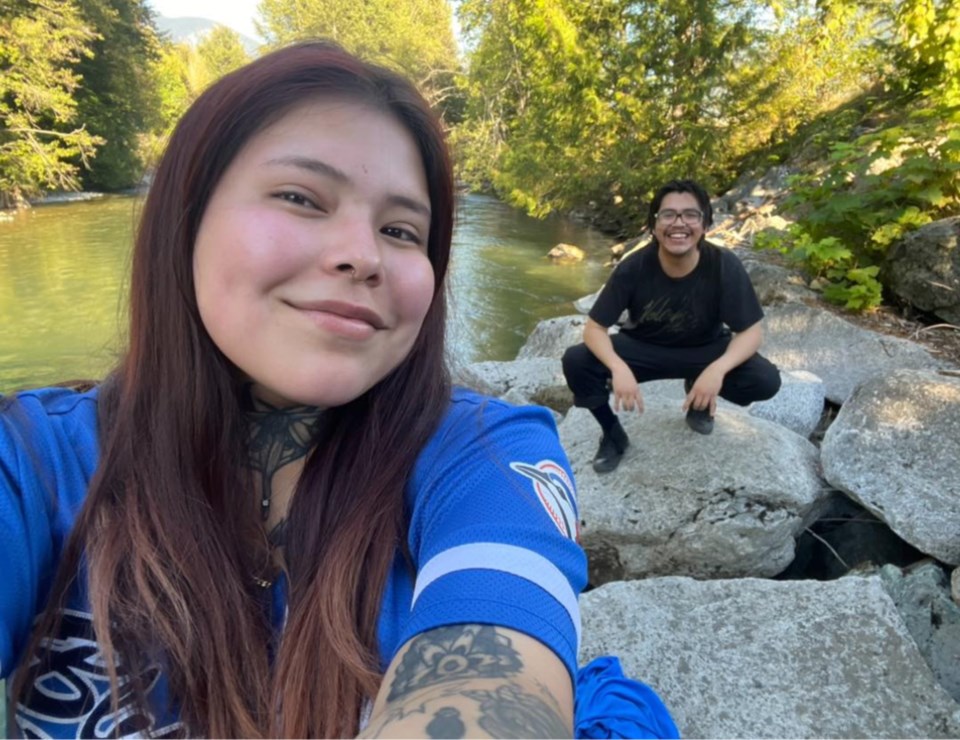A young person’s first week in university should be an exciting and equally nerve-wracking time, but for 22-year-old Aiyana Kalani of the Lil’wat Nation, it was an eye-opening experience.
Kalani went to Vancouver Island University (VIU) in 2021 to major in digital marketing and minor in journalism, but found the experience incredibly isolating. She has since returned home and does not plan on continuing her studies.
“We rarely have education, because the school system was built against us,” she said. “It’s such a struggle for native students to complete a four-year degree because of that. The education system wasn’t built for our people. It was created for settlers by settlers.”
Kalani said the system alienates First Nations people and makes it difficult for them to succeed. The young woman also feels there is a lack of “higher-ups” representing her people in local businesses, and believes a solution is needed to address the inequalities in Canada’s education system, which she said mostly caters to one way of living and learning.
“Our people have a different way of life,” she said.
But feeling like the odd one out in friend groups, classrooms and workplaces has been a part of the artist’s life for as long as she can remember.
“Indigenous people are finding themselves being one of the only Indigenous students in a classroom,” she said. “It gets discouraging, or makes them uncomfortable attending class. The school system was made against us. We were placed in residential schools that were instructed to ‘kill the Indian in the child,’ which created intergenerational trauma affecting generations yet to come.”
Director of Indigenous Education and Engagement at VIU, Lillian Morton, understands the difficulties Indigenous students like Kalani face on campus. Morton is Coast Salish (Penelakut and Stz’uminus) and European.
“It is always hard, especially coming from a small community,” said Morton. “Part of my job is to help as much as I can and ensure they have a good learning experience. The more I know, the more proactive I can be.”
Morton said the university hosts events to help Indigenous students connect.
“Over a tenth of our student population are Indigenous or self-identify as Indigenous people,” she said. “Of course, a lot also don’t self-identify. We had a welcoming event that is specifically for Indigenous students. Something I noticed is that just because you don’t look Indigenous, doesn’t mean you aren’t Indigenous.”
Kalani said she did attend several freshman parties and mixers on campus, where she experienced micro-racism regularly.
“I was introduced with ‘this is my native friend Aiyana’ quite a bit. It bothered me, but I didn’t say anything because I knew these young adults probably haven’t made any Indigenous friends before,” she said. “I had a girl tell me I was her ‘spirit animal.’ I had to pull her aside to explain why that wasn’t OK, especially because it was over the fact that I was drinking and partying a lot.”
Leaving reserve can also cause a serious culture shock for those heading to university, Kalani added. “On reserve things are very different,” she said. “We have one grocery store, one police station and one fire house. It was a bit of a shock moving and having two liquor stores, three gas stations and endless fast food within a 15-minute walk of my new place.”
The lack of community and a connection to the Lil’wat Nation’s traditional culture is something that affected Kalani the most, she said.
“The people are different,” she said. “I never met my neighbours and I lived in Nanaimo for eight months. I didn’t connect with any of the reserves out there, either, so I had nothing to do with my culture anymore.”
A dedicated space for Indigenous students is currently under construction at VIU.
“It is intended to be a home away from home for students coming in,” said Morton. “There are Elders in there daily. Many of the Elders are connected to specific faculties. They host gatherings for students. There is a peer mentorship program that does a lot of work with leading, self-esteem and feeling connected on campus. The Students’ Union also has an Indigenous student rep.”
According to the 2021 census, just under half (49.2 per cent) of Indigenous people aged 25 to 64 had completed a postsecondary qualification, with the most common being a college, CEGEP, or other non-university certificate or diploma. The overall rates of postsecondary completion were 45.3 per cent for First Nations people, 56.3 per cent for Métis and 33.6 per cent among Inuit—all below those recorded for the non-Indigenous population, at 68 per cent.
In 2021, Indigenous women (53.5 per cent) were more likely than Indigenous men (44.4 per cent) to have completed a postsecondary qualification.
Morton agreed Canada’s education system was made for settlers by settlers, and that is why the university as a whole is dedicated to creating positive change.
“This is priority. We are working so hard to change it,” she said.
“That’s why we work on all these things. Residential schools were not intended to educate people.”
Some of the services VIU offers to help Indigenous students settle into college life include:
- Services for Aboriginal Students (hosts weekly activities for Indigenous students that foster a sense of culture, community and belonging, provide culturally appropriate services to Indigenous students with one-on-one appointments, phone calls and emails for: advising, including education and career exploration, referrals to counselling, and support with financial aid, scholarships, funding options, daycare and housing),
- the ‘su’luqw’a’ community cousins peer mentorship,
- VIU Elders-in-Residence
- the VIU Students’ Union’s Indigenous student rep,
- the Indigenous Living and Learning Community at VIU residences
- Shq’apthut, VIU’s Indigenous gathering place and a home away from home




